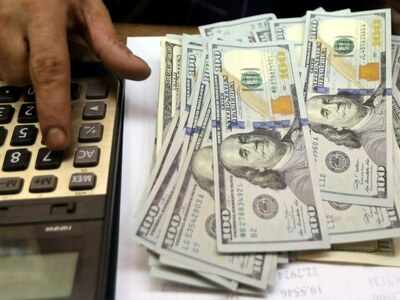The world is facing the existential threat of the climate change crisis, which is fast-unfolding. This situation requires both a meaningful level of fiscal space within countries, especially in highly climate change challenged countries like Pakistan, and development finance both as compensation from rich, advanced countries that have had a significant carbon footprint, and as climate finance provided under a strong spirit of multilateralism.
Sadly, on both counts the situation is very sub-optimal, including development finance required for meeting sustainable development goals with targets set for 2030. The discussion of development finance needs to shift from ‘billions to trillions’, with reportedly around $4 trillion needed by developing countries annually to meaningfully get on track with regard to successfully meeting SDGs, and climate change related goals over the medium- to long-term.
A June 30 Project Syndicate-published article ‘A new vision for development cooperation’ pointed out in this regard ‘The global system of financing for development– including that of development cooperation– has failed to keep pace with the vast changes the world has seen in recent decades. … A more inclusive and responsive model for engagement is needed to leverage the diverse capacities of all countries, promote horizontal partnerships, and frame sustainable development as a collaborative process rooted in shared responsibility. …First, development efforts must be more locally anchored– for example, through the establishment of national platforms where external partners operate under the leadership of local authorities. Second, multilateral action should be strengthened, promoting better coordinated interinstitutional programs. Lastly, regional mechanisms, such as the African Union and the Ibero-American General Secretariat, must be supported as they help to foster more localized and layered governance structures.’
Having said that, the over-board austerity policy has made matters all the more difficult with regard to investment, and government spending towards meeting overall development, and specifically climate change related goals. For instance, over-board use of policy rate – or monetary austerity– has led to increased debt repayment levels for instance, while higher cost of capital has negatively impacted investment levels.
Highlighting increasing level of debt distress, in their article ‘Global public debt hit a record $102 trillion in 2024, striking developing countries hardest’ published on June 26, the United Nations Conference on Trade and Development (UNCTAD) pointed out in this regard ‘Global public debt reached an all-time high of $102 trillion in 2024, up from $97 trillion in 2023, according to “A World of Debt 2025”, published on 26 June by UN Trade and Development (UNCTAD). Public debt can be a powerful tool for development. Governments use it to invest in their people and economies– and pave the way to a better future. But when debt grows too large or becomes too costly, it turns into a burden. That is the current reality for much of the developing world.’
At the same time, austerity policies have negatively impacted economic growth, which has negatively impacted domestic resource mobilization effort, in turn, squeezing fiscal space, especially of developing countries.
A July 7 UNCTAD-published article ‘What comes next: a push for development-centric finance’ indicated in this regard ‘In a world of low growth, rising debt, falling investment and shrinking aid, the promise of the 2030 Agenda is at risk. Developing countries now face a $4 trillion annual financing gap for sustainable development. 3.4 billion people live in countries that spend more on debt interest payments than on health or education.’
Fixing the global development finance, and debt framework is of utmost importance, given the fast-unfolding nature of climate change crisis, significant rise in debt repayment needs, and overall debt distress, the squeezing of fiscal space at the back of developing countries overall in particular operating at significantly sub-optimal economic growth rates, due to practicing over-board austerity policies, which in turn has in general led to increase in poverty and inequality level over the recent years.
The report titled ‘A World of Debt 2025’ by UNCTAD highlighted a very difficult debt situation facing developing countries on one hand, and on the other hand, high SDGs-related financing needs of developing countries for instance. The report pointed out in this regard, ‘In 2024, public debt in developing countries reached US$31 trillion, accounting for 31% of the global total… This represents a substantial increase from their 16% share in 2010. At the same time, this figure reveals the persistent asymmetries in global financial markets: although developing countries account for 39% of global GDP1, they are home to 83% of the world’s population and face substantial SDG financing gaps. There are stark disparities among developing regions, as well as across countries. Over 24% of global public debt— equivalent to three-quarters of the total debt of developing countries— is owed by countries in Asia and Oceania. In comparison, Latin America and the Caribbean accounts for 5% and Africa for less than 2%. Nonetheless, the burden of this debt varies significantly based on the price and maturity of the debt finance countries have access to, and is further exacerbated by the inequalities embedded in the international financial architecture. Those least able to afford it often pay the most.’
Fixing the global development finance, and debt framework is of utmost importance, given the fast-unfolding nature of climate change crisis, significant rise in debt repayment needs, and overall debt distress, the squeezing of fiscal space at the back of developing countries overall in particular operating at significantly sub-optimal economic growth rates, due to practicing over-board austerity policies, which in turn has in general led to increase in poverty and inequality level over the recent years.
Pointing out the dangers in general of this consequence, July 25 PS published article ‘Reimagining sustainable development for a fractured world’ pointed out ‘“Poverty,” Aristotle famously observed, “is the parent of revolution and crime.” History has repeatedly proven the point: inequality often fuels political and social instability, giving rise to conflict and despair. Today, in the face of widening economic disparities and climate disruption, international cooperation on sustainable development is no longer just an expression of solidarity – it is a strategic imperative. Yet just as development challenges grow increasingly urgent, the resources to confront them are steadily declining.’






















